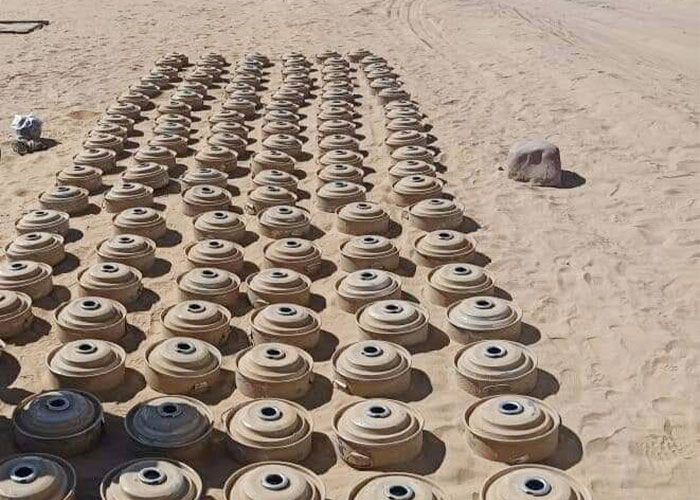Since the beginning of January 2022, 68 Yemeni civilians have been killed and 84 others, predominantly children and women, have been injured in numerous Yemeni governorates, according to the Yemeni Landmine Monitor.

Seyaj condemns the continued planting of anti-personnel mines and sea mines in Yemeni governorates, killing and injuring thousands of civilians and threatening the lives of millions of others.
There are no precise data on the number of civilian deaths since the conflict began in 2014, although it is estimated that over 11,000 people have been killed or injured on land and water.
Yemen has the greatest concentration of individual mine contamination in the world, with the governorate of Al-Hodeidah ranked first, followed by Taiz, then Shabwa, Hajjah, Marib, Al-Jawf, Al-Bayda, and other governorates. 129 operations have been carried out to eliminate millions of mines and explosive devices, according to the Saudi Masam program.
According to information from experts, the most dangerous type of landmine is the LT10, or the “Khomeini”, a plastic sort that is notoriously difficult for devices to detect. Other hazardous mines include those made locally from internationally banned phosphorus, highly explosive TNT, and other extremely dangerous materials.
Seyaj calls on the Ansar Allah Al-Houthi group to immediately stop planting landmines and hand over maps of minefields to demining agencies in Yemen.
Seyaj urges Yemen’s government and non-governmental organizations to provide health care, and physical, psychological, and social rehabilitation for all victims, as well as increase awareness programs aimed at displaced people and residents of contaminated areas from which the group’s militants were expelled.
The National Judiciary Seyaj Organization calls for the speedy launch of lawsuits to convict and prosecute the violators, collectively and individually, as war criminals.
The use, planting, and transfer of mines constitute a flagrant violation of the individual mine ban treaty known as the Ottawa Convention of 1997, and of national laws and international agreements for the protection of civilians during armed conflicts.
Millions of individual mines still pose a threat to the lives of civilians, especially those returning to their liberated villages, and to millions of citizens on land and tens of thousands of fishermen in the Red Sea, west and northwest of Yemen.
The Houthi group’s unceasing, unparalleled use of camouflaged mines and arbitrary cultivation techniques amounts to a war on the present and the future. Mine experts believe that the mortal threat to civilians will live for decades to come, even after the cessation of hostilities.

